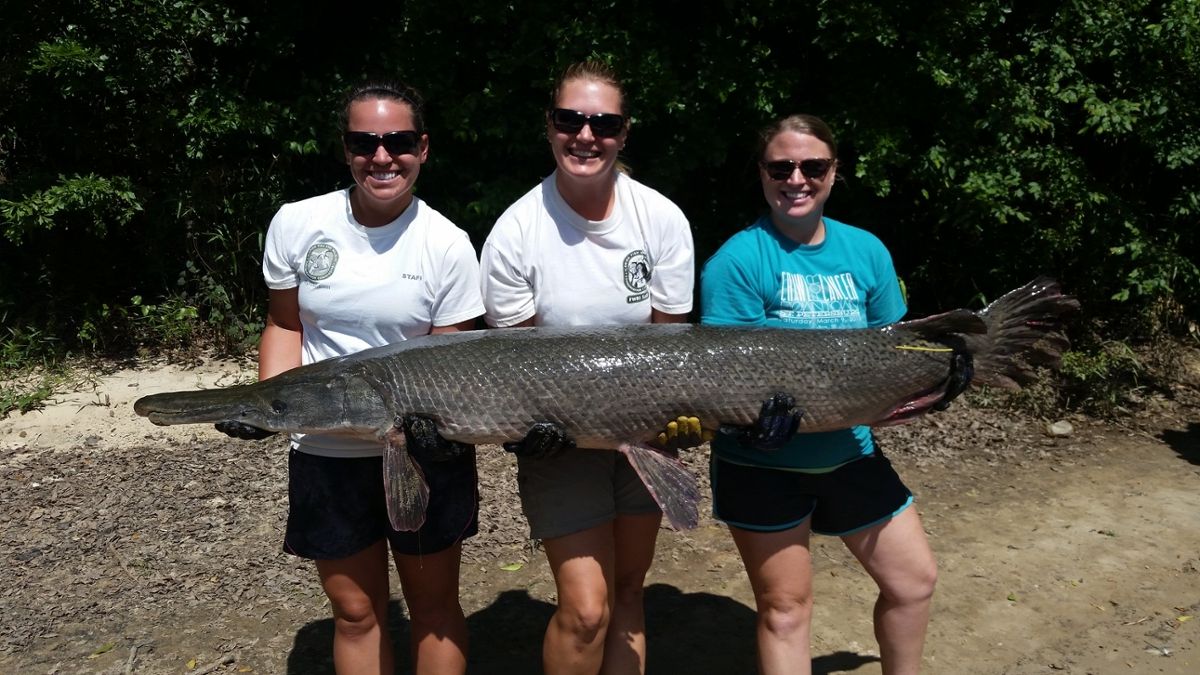While you’re idly kayaking across a bayou, you notice a log floating under the surface. The day is calm, when suddenly you hear the music from Jaws. Are you about to be attacked by a shark? Nope—but in a flash of movement, the log lunges forward, and gobbles up a small fish swimming by.
You’ve just seen an alligator gar in action. Despite its name, this is no reptile. The alligator gar is a freshwater fish, found mostly in the Southern US. But with a long and cylindrical body, flat snout, armor-like scales, and two rows of pointed teeth, this gar sounds as intimidating as the alligator it resembles!
Carnivores, they like to ambush fish, crabs, or other small creatures who venture near. Like similar predators, they use their large, fang-like teeth to grab prey and lash it from side to side. Luckily, alligator gars don’t attack people. But that Jaws music is still fitting—alligator gars have something called a spiral valve intestine, a characteristic of both their ancient ancestors, and today’s sharks!
As you relax in your kayak, having realized that that fish poses no threat to you, you’re unnerved yet again: how big, exactly, was that so-called log? Six impressive feet, and the longest ever caught was almost eight-and-a-half feet long, and 326 pounds. It takes time to grow so gargantuan: the species can live upwards of one hundred years.
Consider yourself lucky to have seen one: Once thought dangerous, the alligator gar has been overfished and, in some places, eradicated; in many states it’s now listed as endangered or rare.










